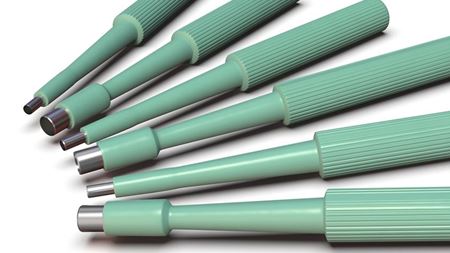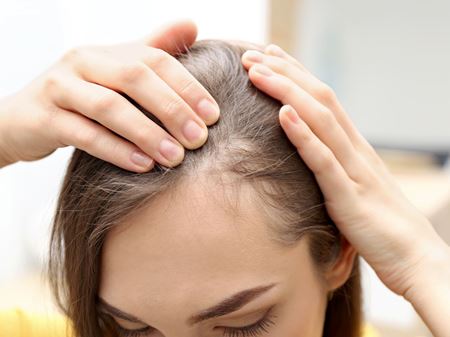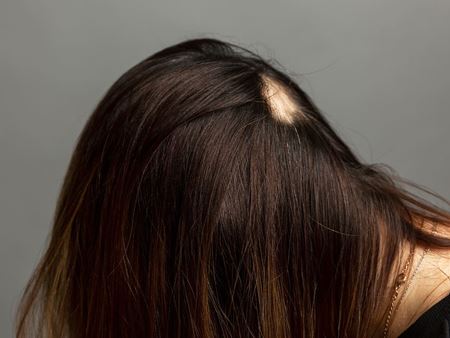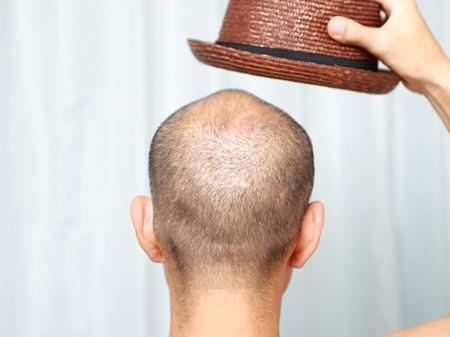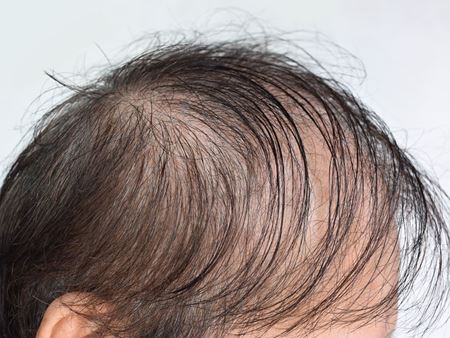Hair and scalp diseases
Causes of hair loss
A medical check-up is essential to assess the cause of a hair loss (effluvium) or of a reduction of hair density (alopecia) and to propose the optimal treatment.
Here are some examples of hair and scalp conditions that are commonly treated.
- Androgenic alopecia or "baldness
- Acute or chronic telogen effluvium
- alopecia areata
- Scarring alopecia
- Traction alopecia
- Trichotillomania
- Scalp ringworm
- Scalp psoriasis
- Seborrheic dermatitis
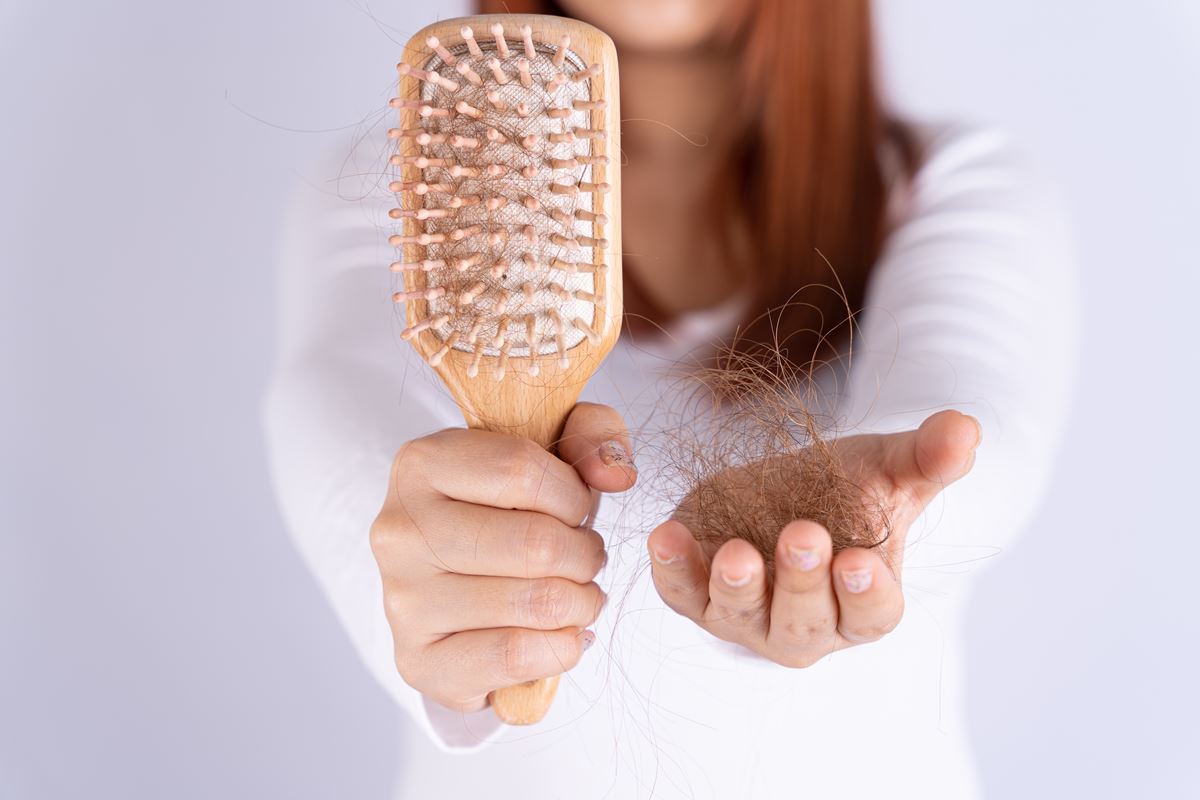
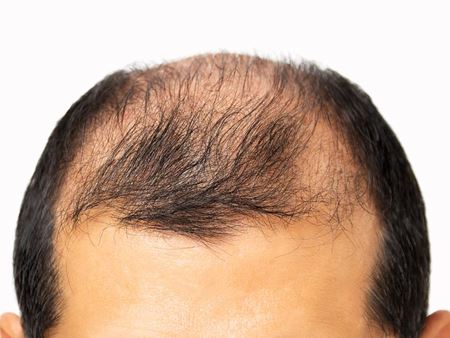
1) Androgenic alopecia (AAG) or "baldness". It is characterized by a progressive and irreversible thinning of the hair, which becomes downy (miniaturization) on the top of the scalp. AAG is the most common cause of alopecia in both men and women and has a significant psychosocial impact. It is caused by the secretion of male hormones and the genetic predisposition of hair follicles to be sensitive to these male hormones.
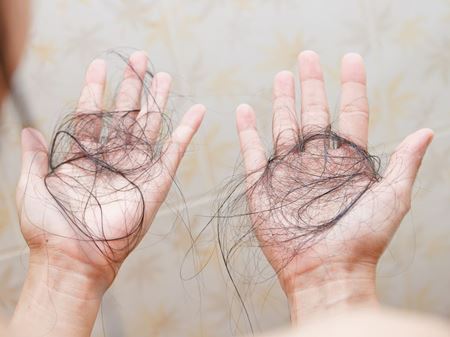
2) Acute or chronic telogen effluvium. This is a diffuse hair loss of reactive origin. It is characterized by massive hair loss and an overall reduction in hair volume. It begins about 3 months after a "stress" of various causes (psychological, hormonal, nutritional, medicinal, infectious, etc.).
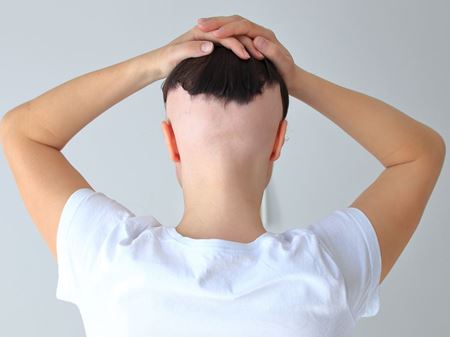
3) Alopecia Areata. This is a common autoimmune disease that occurs in 1-3% of the world's population. It leads to total alopecia in well-defined areas. The hair is not definitively destroyed and can grow back spontaneously.
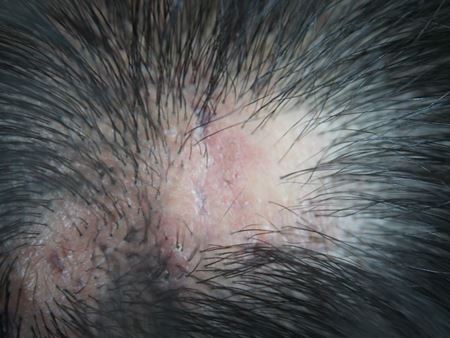
4) Scarring alopecia. Several conditions can be responsible for an inflammatory process that leads to the irreversible destruction of the hair follicles. Smooth, white and shiny patches can be seen on the scalp as a result of the inflammatory process.
There are various causes: lichen planus, discoid lupus, folliculitis decalvans, dissecting cellulitis of the scalp, keloidal acne of the neck, fibrosing frontal alopecia, central centrifugal scarring alopecia of the vertex, scleroderma, sarcoidosis, congenital, traumatic ...
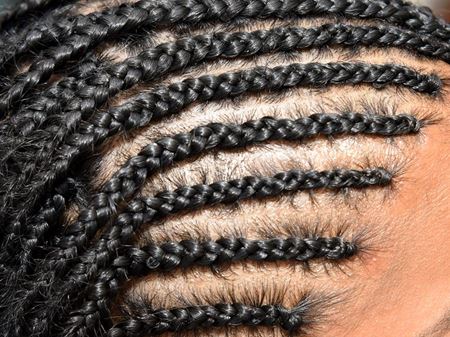
5) Traction alopecia. This is a progressive hair loss that mainly affects the frontal area, the temporal area, the area around the ears and, in the most severe cases, the entire scalp. It is caused by certain hair styling practices. In some cases, the hair loss is permanent.
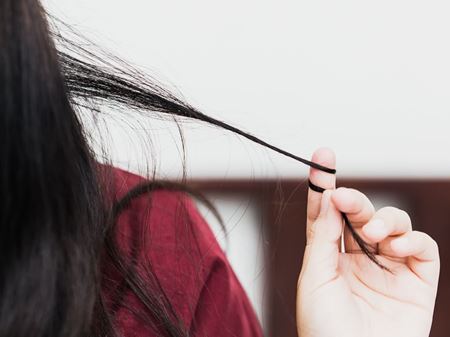
6) Trichotillomania. This is a disorder which consists of compulsive and repeated pulling out of one' s own hair. This leads to alopecia, which can become permanent after many years. In some cases, psychotherapy can be proposed.
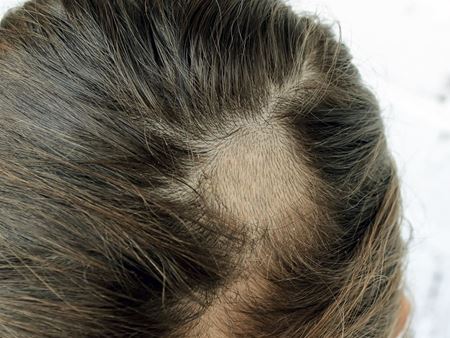
7) Scalp ringworm. This is a fungal infection (dermatophyte) which appears on the scalp as patches with broken hair and scaling ("dandruff"). Scalp ringworm is contagious and is mostly found in children.

8) Scalp psoriasis. Psoriasis is a chronic inflammatory disease that manifests itself on the scalp as red, well-defined patches, large dry flakes and thick, whitish scales that can sometimes form a helmet. Psoriasis can also affect other areas of the body such as the elbows, knees, forelegs, nails, etc.

9) Seborrheic dermatitis. This is a common chronic inflammatory dermatosis characterised by dandruff (greasy and yellowish) and redness on areas of the body rich in sebaceous glands (scalp, ears, eyebrows, nasolabial folds, anterior chest in men). It involves yeasts of the Malassezia family.
HAIR LOSS ASSESSMENT
The assessment of a hair loss or a decrease in hair volume can consist of:
1) A complete history, which is essential in all cases.
2) A trichoscopic examination. This consists of an examination of the scalp and hairs with a dermatoscope (an epiluminescent microscope) and assessing the appearance of the scalp, hair follicles and hairs. It is a very useful non-invasive tool for the diagnosis and monitoring of hair and scalp disorders.
3) A traction test, which consists of pulling a strand of hair firmly at different points on the scalp. The test is positive if more than 10% of the hair can be removed, and allows the assessment of the extent of the hair loss and its distribution on the scalp.
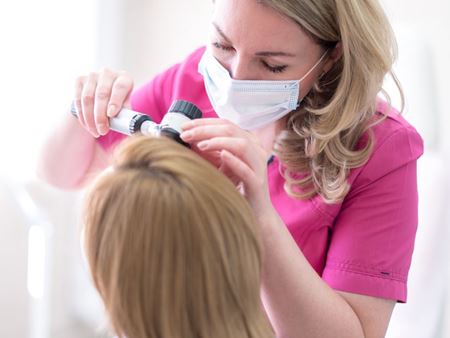
4) A blood test, which allows to look for hormonal deficiencies or disorders that may be the cause of your hair loss.
5) A trichogram. This is a microscopic examination of the hair root which is carried out when an anomaly in the hair cycle is suspected. It consists of extracting 20-60 hairs (with their bulb) from 3 areas of the scalp. Three parameters are then measured under the microscope:
-The proportion of hair in the growing (anagen), resting (catagen), falling (telogen) or dystrophic phase in each area.
-The proportion of anagen to telogen hair
-The diameter of the hair shafts

6) A scalp biopsy. This procedure consists of taking one or two fragments of scalp (4 mm in diameter) under local anaesthesia, with a stitch. The sample is then sent for histopathological analysis to study the number and structure of the hair follicles, to determine if the alopecia is scarring and if there are any cellular infiltrates.
